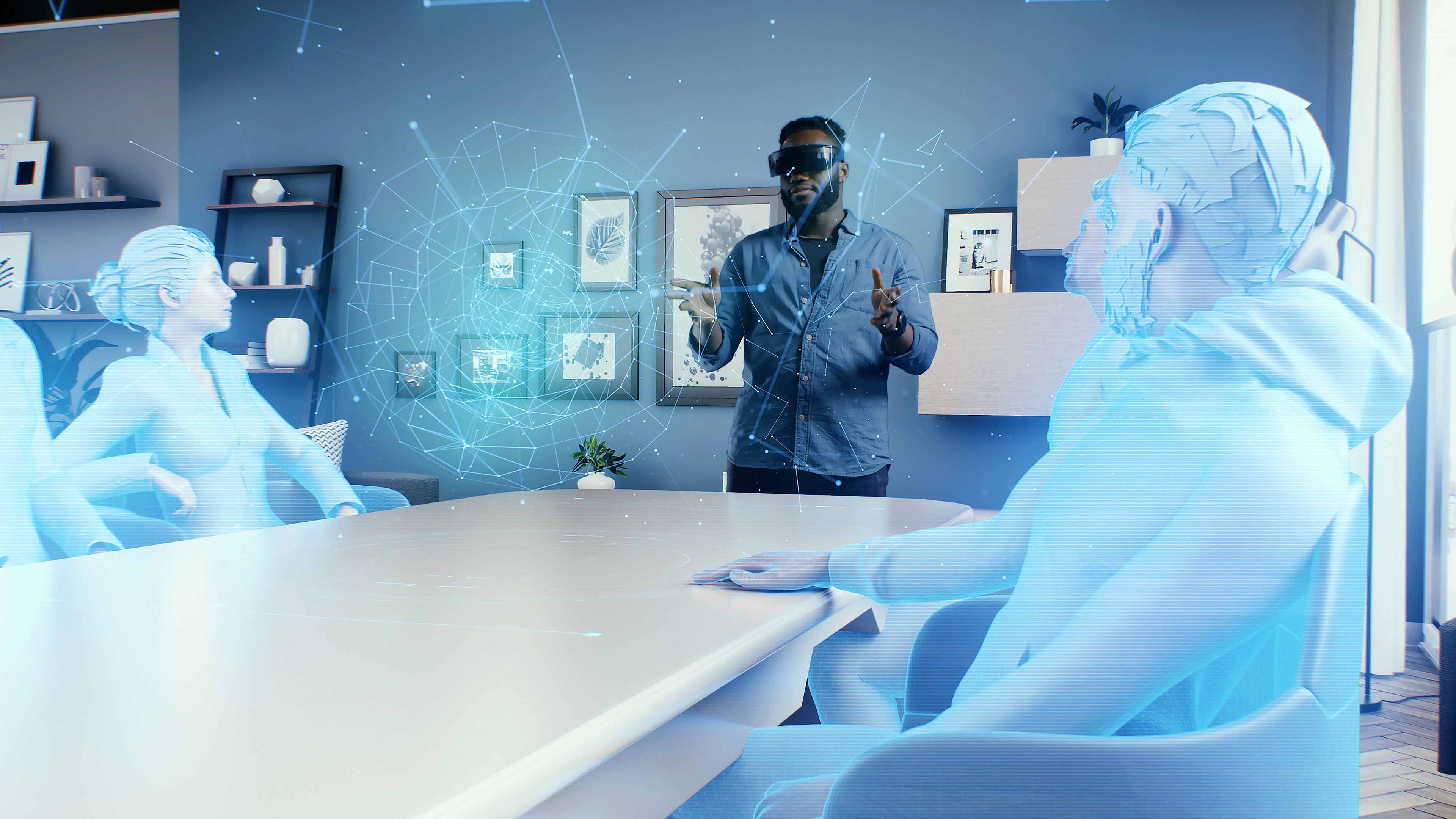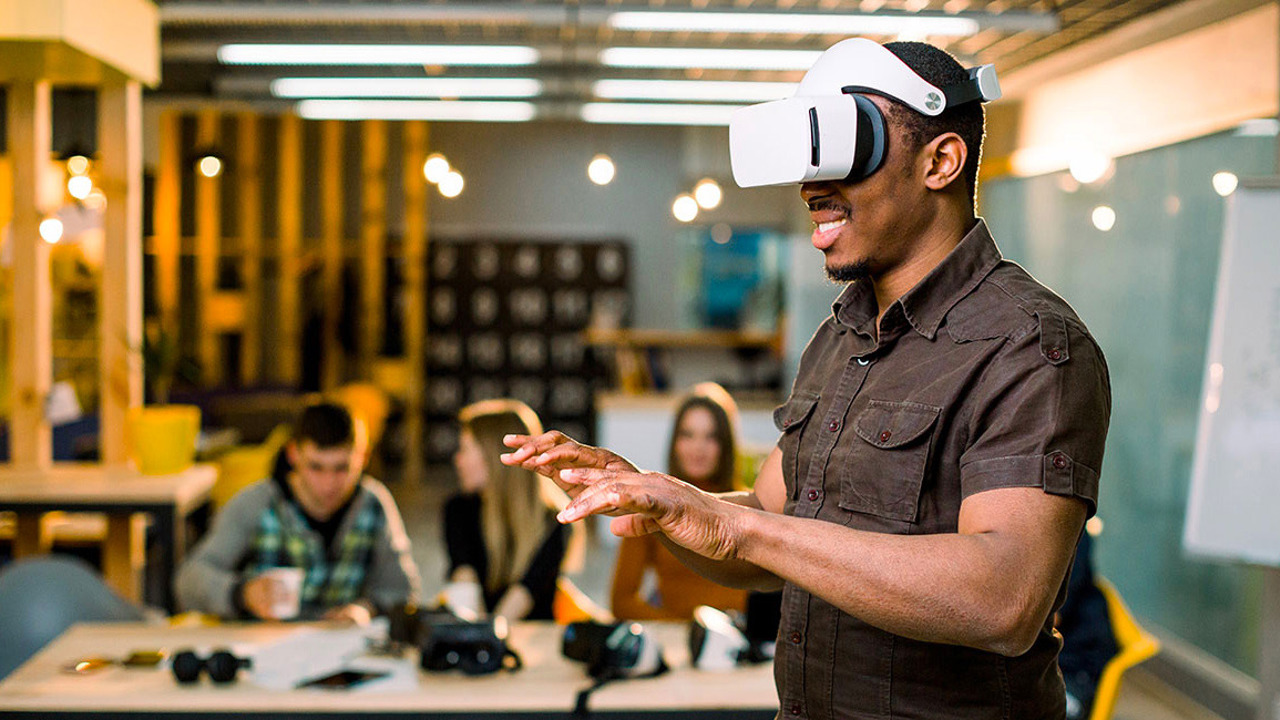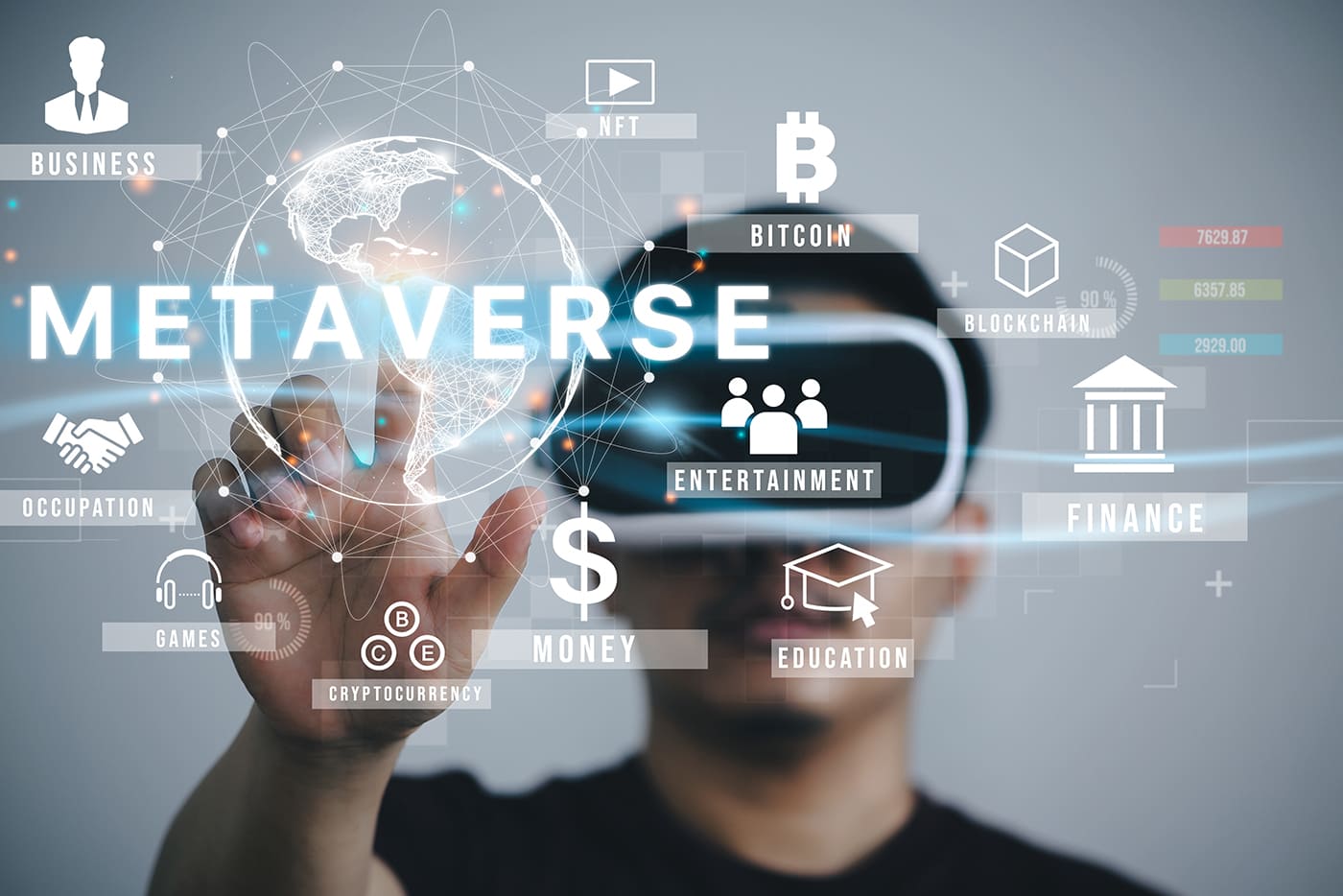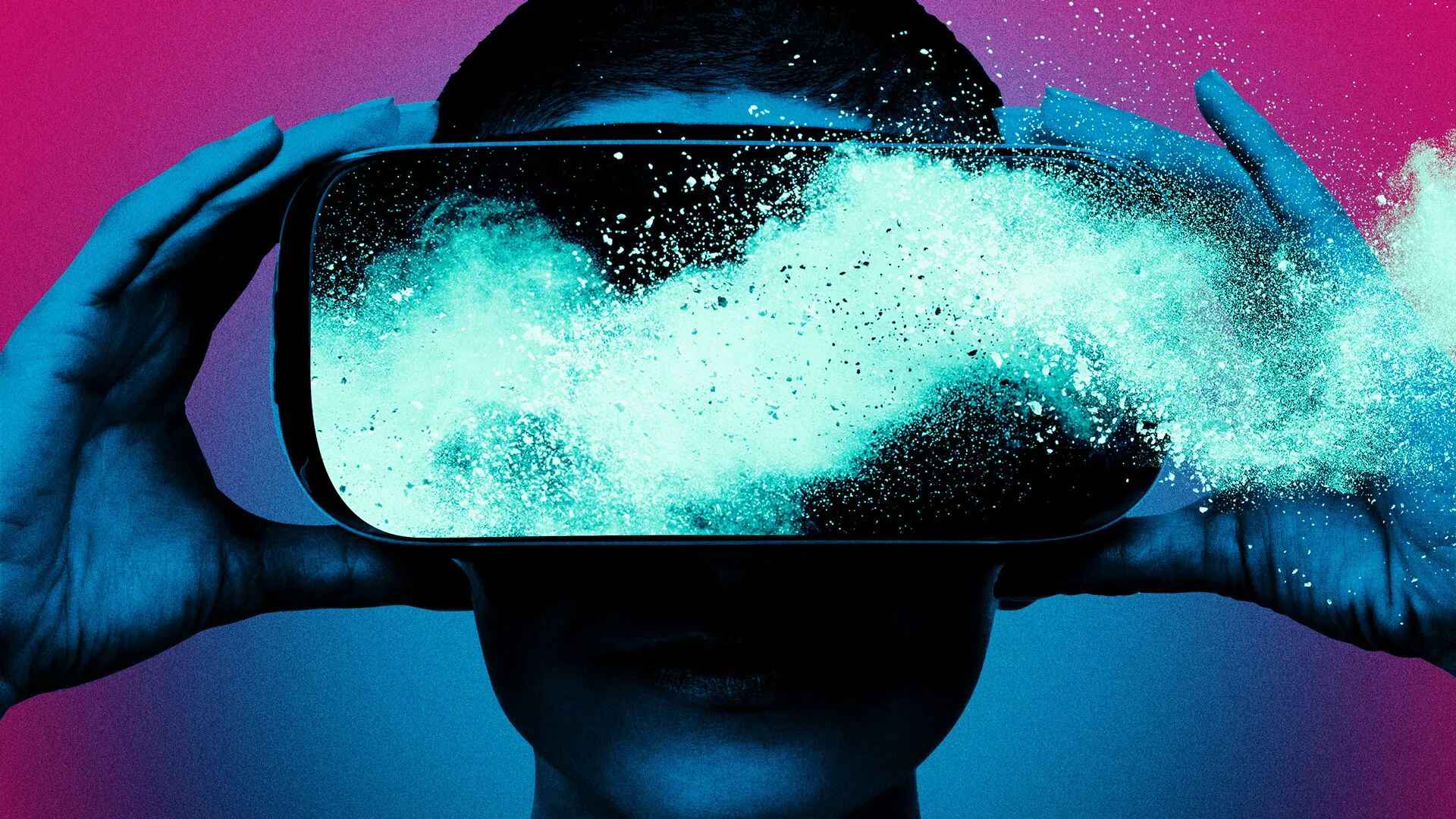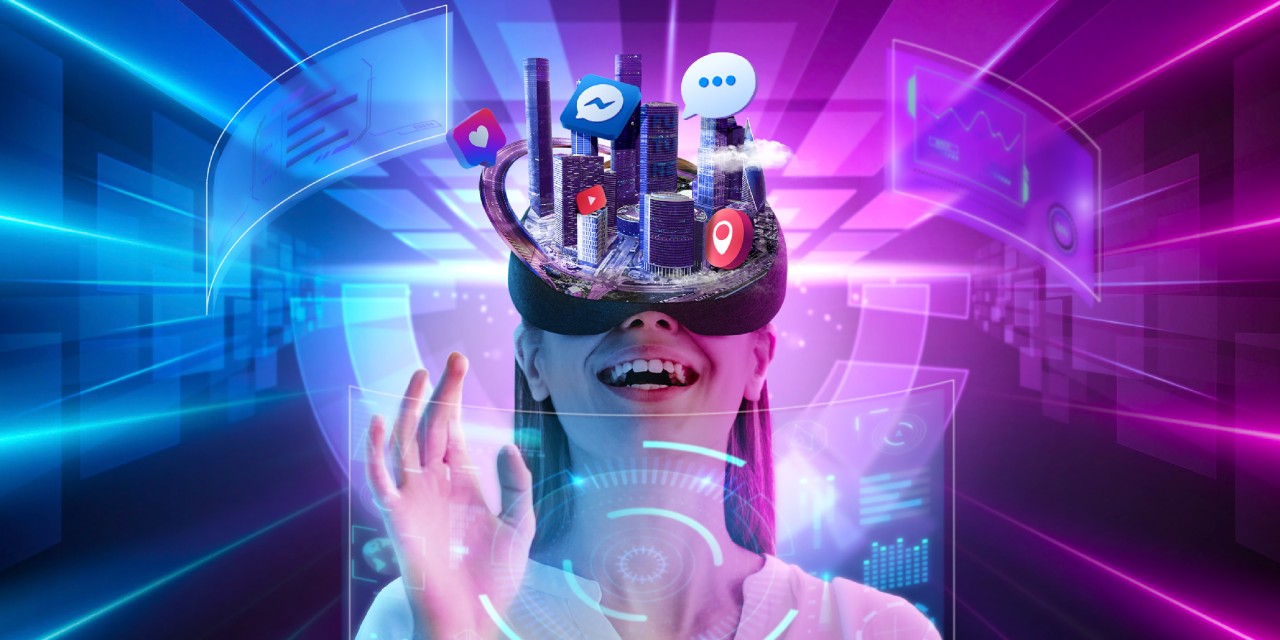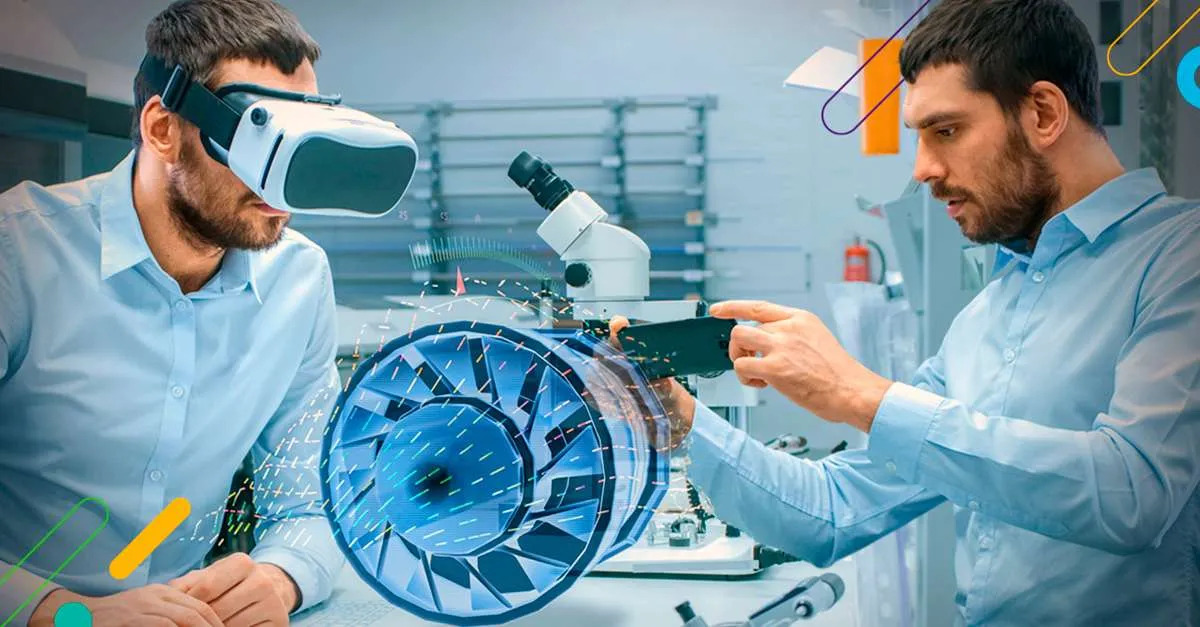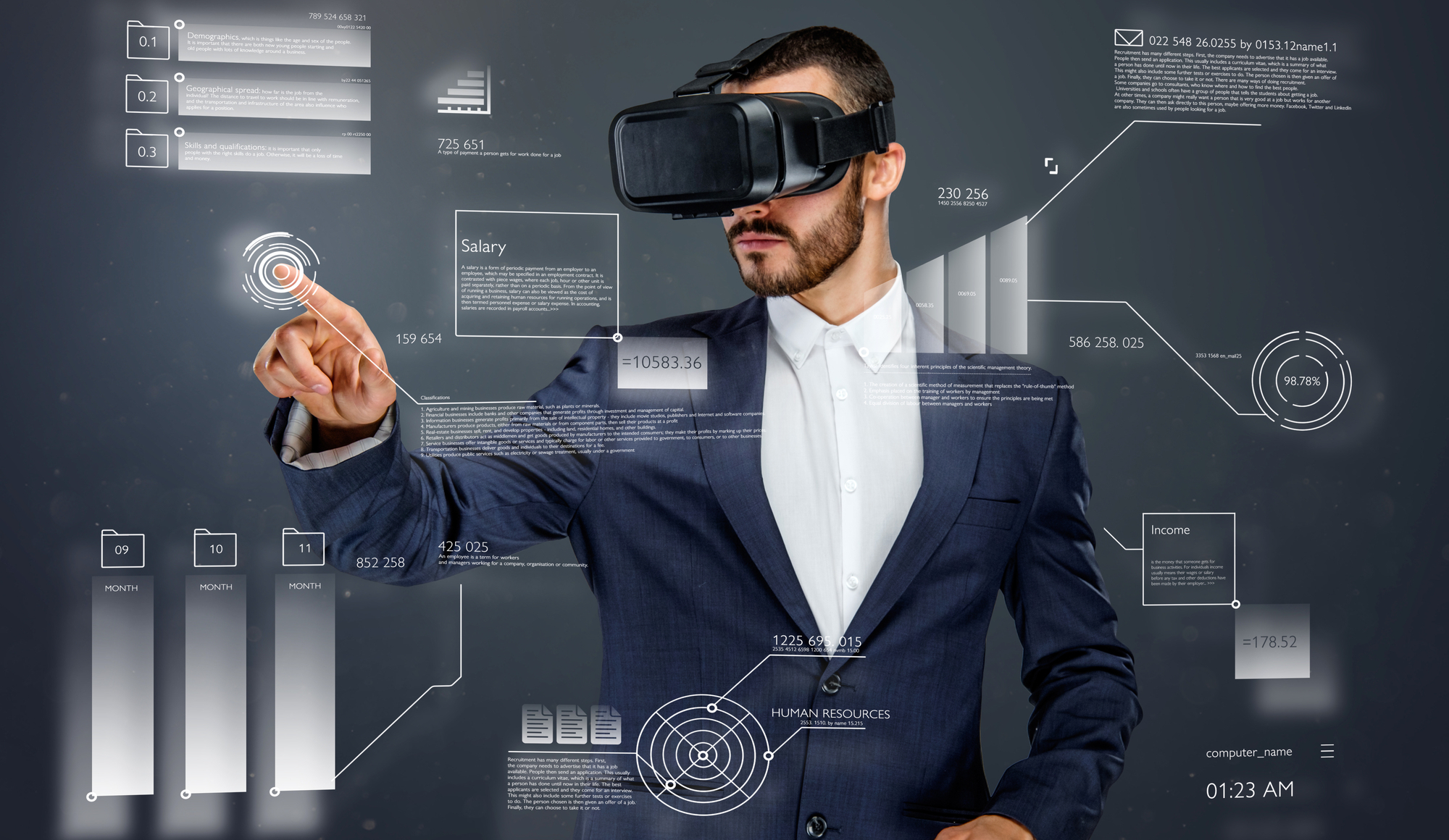Introduction
Welcome to the world of virtual reality work meetings, where traditional office setups are merging with cutting-edge technology to revolutionize the way we collaborate and communicate. Virtual reality, or VR, has gained significant traction in recent years, transforming various industries, including the workplace.
Virtual reality refers to a simulated experience that can be similar to or completely different from the real world. With the use of specialized VR headsets and immersive digital environments, individuals can interact with a three-dimensional computer-generated world, allowing for a sense of presence and engagement.
Work meetings, a fundamental aspect of corporate life, have seen a remarkable transformation with the integration of virtual reality. Gone are the days of stuffy conference rooms and tedious video conferences. Virtual reality work meetings offer a dynamic and interactive alternative that brings participants together regardless of their physical location.
These VR work meetings offer numerous advantages over traditional methods. They enhance collaboration, improve engagement, and streamline communication, all while eliminating the barriers imposed by geographical distance and time zones. Not only are they beneficial for remote teams, but they also offer a fresh and innovative approach for in-person meetings.
In this article, we will explore the world of virtual reality work meetings, delve into their intricacies, and highlight the various benefits and challenges they present. We will examine the key features and tools used in virtual reality work meetings and discuss their potential applications across different industries. Through case studies, we will discover how pioneering companies have successfully embraced virtual reality in their work meetings.
So, fasten your VR headsets and get ready to embark on a fascinating journey that will redefine the way we work, collaborate, and connect in the digital age.
What is Virtual Reality?
Virtual reality (VR) is a technology that allows individuals to experience and interact with a computer-generated environment in a realistic and immersive way. By using specialized equipment such as VR headsets or goggles, participants can be transported to a simulated world that can mimic real-life scenarios or create entirely new and imaginative spaces.
The fundamental goal of virtual reality is to provide users with a sense of presence, where they feel like they are physically present in the virtual environment, even though they are aware it is not real. This is achieved through a combination of visual, auditory, and sometimes even haptic feedback, which stimulates the user”s senses and creates an illusion of immersion.
Virtual reality technology has seen significant advancements in recent years, with improved hardware and software capabilities. VR headsets, such as the Oculus Rift, HTC Vive, or PlayStation VR, deliver high-resolution displays and positional tracking, allowing users to look around and move within the virtual environment in a more natural way.
Virtual reality can be experienced in two main forms: fully-immersive and non-immersive. Fully-immersive VR involves wearing a headset that covers the user”s entire field of view and often includes handheld controllers for interaction. Non-immersive VR, on the other hand, typically involves a computer screen or a mobile device used to view and interact with the virtual environment.
The applications of virtual reality extend beyond gaming and entertainment. Industries such as healthcare, education, real estate, architecture, and manufacturing have adopted virtual reality to enhance training, visualization, design, and collaboration processes. VR has also found its place in the workplace, transforming the way we conduct work meetings and collaborate with remote teams.
Now that we have a basic understanding of virtual reality, let”s explore how this technology has revolutionized the concept of work meetings in the next section.
The Evolution of Work Meetings
Work meetings have undergone a remarkable transformation over the years, adapting to advancements in technology and changing work dynamics. Traditional office setups typically involved in-person meetings conducted in conference rooms, where participants would gather around a table to discuss and collaborate.
With the rise of globalization and remote work, traditional in-person meetings presented several challenges. Geographical restrictions made it difficult for teams spread across different locations to come together physically. Furthermore, organizing and coordinating travel schedules for participants added logistical complexities and increased costs.
The advent of video conferencing brought a significant change to the way meetings were conducted. It allowed remote participants to join meetings virtually through audio and video connections. Video conferencing solutions offered an improved level of interaction, as participants could see and hear each other, albeit in a two-dimensional format.
However, despite the convenience of video conferencing, it still lacked the immersive and engaging qualities of face-to-face meetings. It was challenging to recreate the energy and dynamics of in-person interactions, leading to a potential loss of engagement and collaboration among participants. Additionally, participants often faced distractions from their physical surroundings, further diminishing the effectiveness of remote meetings.
This is where virtual reality work meetings step in, bridging the gap between in-person and remote collaboration. VR allows participants to join meetings in a virtual space where they can interact with avatars representing themselves and other attendees. This immersive experience creates a stronger sense of presence and engagement, enabling more effective communication and collaboration.
Virtual reality work meetings not only break down geographical barriers but also eliminate distractions from the physical environment. Participants can focus solely on the meeting at hand, as the virtual environment provides a controlled and dedicated workspace. This enhanced level of concentration promotes efficient decision-making and problem-solving.
As technology continues to advance, virtual reality work meetings are becoming more accessible and user-friendly. The evolution of work meetings has brought us to a point where we can seamlessly collaborate with colleagues, regardless of their physical location, and experience the benefits of face-to-face interactions in a virtual world.
The Advantages of Virtual Reality Work Meetings
Virtual reality work meetings offer a multitude of advantages over traditional methods of collaboration. By leveraging the immersive and interactive nature of virtual reality, organizations can unlock new levels of productivity, engagement, and communication. Here are some key advantages of virtual reality work meetings:
1. Enhanced Collaboration: Virtual reality work meetings foster a collaborative environment by providing a shared virtual space where participants can interact and engage with one another. This interactive experience promotes active participation, idea sharing, and brainstorming, ultimately leading to more innovative and effective solutions.
2. Increased Engagement: Traditional video conferences can often lead to participant disengagement due to distractions and limited interpersonal connection. In virtual reality work meetings, participants experience a heightened sense of presence and immersion, leading to increased focus, attentiveness, and active engagement throughout the meeting.
3. Improved Communication: Virtual reality work meetings allow for more natural and intuitive communication. Participants can use gestures, body movements, and spatial audio to convey their ideas and emotions, making the meeting experience more expressive and enhancing overall comprehension.
4. Time and Cost Efficiency: Virtual reality work meetings eliminate the need for travel and accommodation expenses, saving organizations significant costs. Additionally, participants can join meetings from anywhere in the world, reducing time spent on commuting and allowing for more flexible scheduling.
5. Global Collaboration: Virtual reality work meetings enable seamless collaboration between teams located in different parts of the world. Geographical barriers are no longer a limitation, as participants can gather in the same virtual space, fostering global teamwork and fostering a sense of unity among diverse teams.
6. Simulated Environments: Virtual reality can recreate realistic or fictional environments, enabling immersive training, simulations, and presentations. This is especially beneficial for industries such as manufacturing, healthcare, and real estate where hands-on experiences and visualizations are vital.
7. Improved Decision Making: Virtual reality work meetings facilitate more informed and efficient decision-making. By visualizing data and designs in a 3D environment, participants can gain a deeper understanding of complex concepts, leading to quicker and more accurate decision-making processes.
8. Team Building: Virtual reality work meetings provide opportunities for team-building exercises and activities that promote collaboration, trust, and camaraderie. From virtual team-building games to social gatherings in virtual environments, these activities help strengthen professional relationships and boost team morale.
Overall, virtual reality work meetings offer a transformative and immersive experience that enhances collaboration, engagement, and communication. By harnessing the power of virtual reality technology, organizations can unlock the full potential of their teams and revolutionize the way work meetings are conducted.
How Does a Virtual Reality Work Meeting Function?
A virtual reality work meeting operates through a combination of specialized hardware, software, and networking capabilities. Through these integrated systems, participants can engage in a virtual environment and collaborate as if they were physically present in the same space. Let’s explore the key components and functionalities of a virtual reality work meeting:
1. Virtual Reality Headsets: Participants wear virtual reality headsets or goggles that provide them with a visual and auditory virtual experience. These headsets typically include high-resolution displays, motion sensors, and audio systems to create a sense of immersion and presence.
2. Virtual Meeting Spaces: Virtual reality work meetings take place in virtual meeting spaces. These spaces can range from realistic office environments to unique and imaginative settings. They provide a platform for participants to gather, communicate, and interact with one another using avatars.
3. Avatars: In a virtual reality work meeting, each participant is represented by an avatar. Avatars serve as digital representations of participants in the virtual environment. They can be customized to reflect each individual’s appearance and provide a visual means of identification within the meeting space.
4. Networking and Connectivity: Participants connect to a virtual reality work meeting platform over the internet. The platform facilitates real-time communication and synchronization, ensuring that all participants are connected and share the same virtual environment. This connectivity enables smooth interaction and collaboration among team members.
5. Interaction and Collaboration: Virtual reality work meetings offer various tools and features to enable interaction and collaboration. Participants can engage in conversations through voice communication, just like in a traditional meeting. Additionally, hand gestures, body movements, and other intuitive inputs allow for non-verbal communication and expression.
6. Virtual Objects and Tools: The virtual environment in a virtual reality work meeting can include virtual objects and tools. Participants can use these objects and tools to present information, share documents, and interact with visual aids. It creates a dynamic and interactive space that enhances the meeting experience and encourages active participation.
7. Facilitator and Moderator Controls: Virtual reality work meeting platforms often have facilitator and moderator controls to manage and facilitate the meeting. These controls allow the meeting organizer to guide the conversation, control the flow of presentations, and manage participant permissions.
8. Recording and Playback: Some virtual reality work meeting platforms offer recording capabilities, allowing participants to capture the meeting for later review or to share with absent colleagues. This feature enables seamless knowledge sharing and ensures that important discussions and decisions are documented.
In a virtual reality work meeting, participants can collaborate, share ideas, present information, and engage in discussions as if they were physically in the same room. The combination of immersive technology and collaborative features creates a unique and productive meeting experience that transcends physical limitations, fostering collaboration and communication across distances.
Key Features and Tools in Virtual Reality Work Meetings
Virtual reality work meetings are supported by a range of features and tools that enhance collaboration, communication, and productivity. These features and tools are designed to leverage the capabilities of virtual reality technology and provide an immersive meeting experience. Let’s explore some of the key features and tools commonly found in virtual reality work meetings:
1. Spatial Audio: Spatial audio is a powerful feature that allows participants to hear sound from specific directions within the virtual environment. This adds to the sense of immersion and presence, as participants can discern the location of sounds and conversations, making the meeting experience more realistic and engaging.
2. Gesture Recognition: Gesture recognition technology enables participants to use hand gestures and body movements to interact with the virtual environment and communicate non-verbally. This feature enhances expression and fosters more natural and intuitive communication among participants.
3. Shared Whiteboards: Shared whiteboards in virtual reality work meetings allow participants to collaborate and visualize ideas collectively. Just like in physical meetings, participants can sketch or write on a shared whiteboard, making it easier to brainstorm, illustrate concepts, and share information in real-time.
4. Presentation Integration: Virtual reality work meeting platforms often include presentation integration tools. Participants can import and share slides, documents, and other visual aids into the virtual environment. This functionality allows for seamless presentations and supports a more immersive and interactive meeting experience.
5. Screen Sharing: Similar to video conferencing, virtual reality work meetings may offer screen sharing features. Participants can share their screens, allowing others to view their desktops or specific applications. This functionality is particularly useful for demonstrations, training, or collaborating on specific tasks.
6. Virtual Collaboration Objects: Virtual collaboration objects are interactive 3D elements that participants can manipulate and interact with during a virtual reality work meeting. These objects may include charts, graphs, models, or other visual representations of data, fostering collaboration and facilitating information sharing.
7. Private Breakout Spaces: Some virtual reality work meeting platforms include private breakout spaces where smaller groups of participants can have more focused discussions or work on specific tasks. These spaces provide flexibility and promote efficient collaboration within the overall meeting environment.
8. Moderation and Controls: Moderation and control features enable the meeting organizer or facilitator to manage the meeting smoothly. These features may include the ability to mute participants, control access to certain functionalities, manage participant permissions, and guide the meeting flow effectively.
As technology continues to advance, virtual reality work meeting platforms are constantly evolving, offering even more features and tools to enhance collaboration and productivity. These features, combined with the immersive nature of virtual reality, create a dynamic and engaging meeting environment that promotes effective communication, teamwork, and creativity.
Benefits of Virtual Reality Work Meetings for Different Industries
Virtual reality work meetings offer significant advantages for various industries, transforming the way organizations collaborate, train, and conduct business. Let’s explore the benefits of virtual reality work meetings in different sectors:
1. Healthcare: In the healthcare industry, virtual reality work meetings enable remote collaboration between doctors, specialists, and medical professionals. Surgeons can use virtual reality to simulate complex procedures and practice surgeries, leading to improved surgical outcomes. Moreover, healthcare providers can conduct remote training programs, allowing medical students and practitioners to gain hands-on experience in a virtual environment.
2. Education: Virtual reality work meetings revolutionize distance education by creating engaging and immersive virtual classrooms. Students can collaborate, interact, and participate in virtual experiments or simulations, enhancing their learning experience. Virtual reality also provides opportunities for global collaboration and virtual field trips, allowing students to explore places and cultures without leaving the classroom.
3. Architecture and Design: Virtual reality work meetings offer architects and designers the ability to visualize and present their projects in a realistic 3D environment. Clients can immerse themselves in virtual walkthroughs of buildings or spaces before construction begins, providing a clearer understanding of the design and layout. This enhances communication and minimizes errors, resulting in more efficient and client-centric design processes.
4. Manufacturing: For the manufacturing industry, virtual reality work meetings streamline collaboration between distributed teams. Designers, engineers, and manufacturers can work together in a virtual environment to visualize and optimize product designs, reducing time-to-market and improving production efficiency. Virtual reality also facilitates interactive training programs for assembly line workers, improving safety and reducing errors.
5. Real Estate: Virtual reality work meetings redefine the real estate industry by offering virtual property tours and immersive viewing experiences. Buyers and renters can explore properties remotely, saving time and travel costs. Real estate agents can conduct virtual meetings to discuss property details and negotiate deals, improving efficiency and increasing client satisfaction.
6. Training and Simulation: Virtual reality work meetings provide a safe and cost-effective platform for training and simulations across industries. Flight simulations for pilots, military training exercises, and emergency response simulations can all be conducted in a realistic virtual environment, minimizing risks and enhancing training effectiveness.
7. Creative Industries: In creative industries such as advertising, virtual reality work meetings enable collaborative brainstorming sessions, allowing designers and marketers to visualize and refine creative concepts in real-time. It fosters creativity, encourages participation, and accelerates the creative process.
8. Global Collaboration: Virtual reality work meetings facilitate global collaboration by eliminating the constraints of geography and time zones. Teams can work together seamlessly, share ideas, and make decisions in an immersive environment, fostering innovation and cross-cultural understanding.
In each of these industries, virtual reality work meetings offer unique benefits tailored to their specific needs. By leveraging the power of virtual reality, organizations can overcome physical limitations, enhance collaboration, improve productivity, and ultimately drive business success.
Potential Challenges and Limitations of Virtual Reality Work Meetings
While virtual reality work meetings offer numerous advantages, it is important to be aware of the potential challenges and limitations associated with this emerging technology. By understanding these limitations, organizations can effectively address them and optimize the use of virtual reality in their work meetings. Let’s explore some of the key challenges and limitations:
1. Cost and Accessibility: The cost of virtual reality headsets and the required hardware can be a barrier for widespread adoption. Depending on the quality and features, VR equipment can be expensive for individuals and organizations, making it less accessible for some. Additionally, not all employees may have access to the necessary hardware, limiting widespread implementation.
2. Technical Issues: Virtual reality work meetings heavily rely on stable internet connections, and any technical issues or network limitations can disrupt the meeting experience. Bandwidth requirements can be demanding, and poor connection quality can result in lag, freezing, or audio/video synchronization issues. Technical glitches can negatively impact the collaborative nature of the meeting.
3. Physical Comfort: Some individuals may experience motion sickness or discomfort when using virtual reality headsets for extended periods. The weight and fit of the headsets, along with the sensitivity to motion and visual stimulation, can cause fatigue, headaches, or dizziness. Ensuring user comfort and providing regular breaks during meetings becomes crucial.
4. Learning Curve: Virtual reality work meetings introduce a new level of interaction and navigation that may require some participants to adapt to the virtual environment. The learning curve associated with using virtual reality tools and features may initially result in decreased productivity until users become proficient in navigating the virtual space and utilizing the available tools effectively.
5. Limitations in Non-Verbal Communication: While virtual reality work meetings offer the ability to communicate verbally and through gestures, some nuances of non-verbal communication may be lost in the virtual environment. Facial expressions and subtle body language cues may not be as easily conveyed, potentially impacting the depth of understanding and interpersonal connections among participants.
6. Privacy and Security Concerns: Virtual reality work meetings involve sharing virtual spaces and potentially sensitive information. Organizations must address privacy and security concerns to ensure that participants’ data is protected and confidential. Adequate measures must be implemented to safeguard against unauthorized access or data breaches in the virtual meeting environment.
7. Content Creation and Customization: Creating and customizing virtual environments for specific meeting needs can require specialized skills and resources. Organizations may need to invest in software development or partner with experienced virtual reality content creators to design and tailor virtual spaces to their specific requirements.
8. Integration with Existing Tools and Systems: Integrating virtual reality work meetings with existing collaboration tools, workflows, and enterprise systems can pose challenges. Seamless integration with platforms such as project management tools, document sharing systems, and video conferencing software may require careful planning and configuration to ensure a smooth and effective collaboration experience.
While virtual reality work meetings offer immense potential, organizations must consider these challenges and limitations as they adopt and implement this technology. By addressing these limitations through proper training, investment in infrastructure, and ongoing usability enhancements, organizations can maximize the benefits virtual reality brings to the workplace.
Case Studies: Companies Utilizing Virtual Reality Work Meetings
Several forward-thinking companies have embraced virtual reality work meetings and are reaping the benefits of this innovative technology. Let’s explore a few case studies that highlight how these companies have utilized virtual reality in their work meetings:
1. Accenture: Accenture, a global professional services firm, has implemented virtual reality work meetings to enhance collaboration and training. The company uses virtual reality to connect teams across different regions, enabling seamless communication and knowledge sharing. Accenture also leverages virtual reality for immersive client presentations, allowing clients to experience proposed solutions in a realistic and interactive manner.
2. Ford: Ford, the renowned automotive manufacturer, has incorporated virtual reality work meetings into its product design and development processes. With virtual reality, design teams are able to visualize and assess vehicle prototypes in a virtual environment, enabling faster iterations and reducing the need for physical prototypes. Ford’s use of virtual reality work meetings has accelerated the design process and improved collaboration among geographically dispersed teams.
3. Cisco: Cisco, a global technology company, has integrated virtual reality work meetings into its corporate culture to enhance communication and collaboration. The company uses virtual reality to conduct virtual team-building activities, interactive training sessions, and project meetings. By leveraging the immersive nature of virtual reality, Cisco has created a more engaging and inclusive environment for its remote workforce.
4. Microsoft: Microsoft has developed its virtual reality work meeting platform called “Microsoft Mesh.” This platform integrates virtual reality technology with their suite of collaboration tools, including Microsoft Teams. The aim is to enable users to have more immersive and interactive meetings, where participants can engage with virtual content and collaborate in a shared virtual environment.
5. IBM: IBM has implemented virtual reality work meetings to innovate its design thinking and ideation processes. The company leverages virtual reality to facilitate brainstorming sessions and collaborative problem-solving. IBM’s virtual reality work meetings enable designers and stakeholders to visualize concepts, present ideas, and garner real-time feedback, leading to more effective and efficient decision-making.
6. Pixar Animation Studios: Pixar, renowned for its animated films, utilizes virtual reality work meetings as part of its creative process. The studio uses virtual reality to review storyboards, visualize scenes, and evaluate animations. Virtual reality work meetings provide a more immersive and interactive environment for teams to collaborate and provide feedback, enhancing the creativity and quality of their work.
These case studies demonstrate the diverse applications and advantages of virtual reality work meetings in various industries. From improving collaboration and design processes to enhancing communication and training, virtual reality enables companies to innovate, streamline workflows, and achieve better outcomes. As technology continues to advance, more companies are expected to explore and adopt virtual reality work meetings to stay ahead in an increasingly digital and interconnected world.
Conclusion
Virtual reality work meetings have emerged as a powerful tool to transform the way organizations collaborate, communicate, and conduct business. With immersive technology and interactive features, virtual reality work meetings offer numerous advantages across industries.
The evolution of work meetings, from traditional in-person gatherings to video conferences, has now reached a new frontier with virtual reality. By breaking down geographical barriers, virtual reality work meetings enable global collaboration and bring teams together in a shared virtual space. This fosters engagement, enhances communication, and promotes effective collaboration.
Various industries have embraced virtual reality work meetings to unleash their potential. From healthcare and education to architecture and manufacturing, virtual reality offers unique benefits tailored to each sector’s requirements. It improves training, visualization, and decision-making processes, ultimately leading to improved productivity and outcomes.
Nevertheless, virtual reality work meetings do have challenges and limitations. Costs, technical issues, and physical comfort concerns can pose barriers to adoption. Addressing these challenges requires investment in infrastructure, user training, and ongoing enhancement.
Despite the challenges, case studies of pioneering companies demonstrate the immense potential of virtual reality work meetings. Accenture, Ford, Cisco, Microsoft, IBM, and Pixar have successfully harnessed virtual reality to improve collaboration, accelerate innovation, and enhance their respective industries.
As technology continues to advance, virtual reality work meetings will likely become more accessible, user-friendly, and integrated with existing collaboration tools and workflows. Organizations that embrace this transformative technology will gain a competitive edge in productivity, creativity, and global teamwork.
In conclusion, virtual reality work meetings offer a dynamic, immersive, and impactful way to collaborate and connect in the digital age. By embracing virtual reality’s capabilities, organizations can unlock new levels of productivity, engagement, and innovation, revolutionizing the way they conduct work meetings and shape the future of work.







